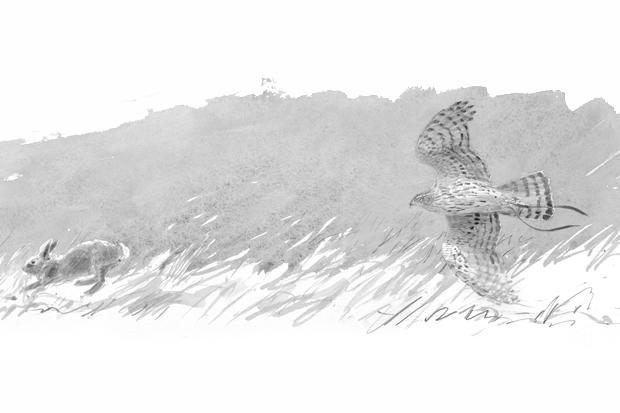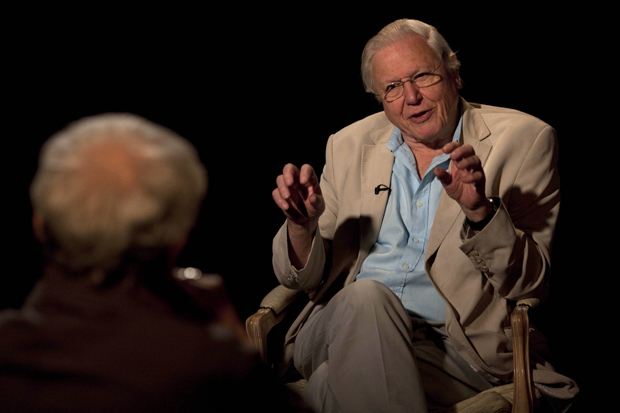The best books by good writers — and Philip Ball is a very good writer indeed — are sometimes the ones that don’t quite work. This brilliant study of how occultists and scientists alike have attempted to see the invisible is very much that kind of fascinating failure.
Its subject is just too large — and, well, it is just too hard to see its edges clearly. Ball begins with pseudo-medieval recipes for invisibility:
Take a black cat and a new pot, a mirror, a lighter, coal and tinder. Gather water from a fountain at the strike of midnight… put the boiled cat on a new dish… then put the bones one by one under the teeth on the left side, while looking at yourself in the mirror…
He concludes with astounding scientific visions: ‘One can also imagine building a metamaterial structure that, rather than sealing off a part of space from light, will open up a hole, in effect linking one region in space to another.’ And in between, he covers Descartes’ interest in Rosicrucianism, David Garrick’s fright wig, Victorian spiritualist photography, the X-ray craze of the late 1890s, The Invisible Man, Robert Hooke’s microscopy and how the French navy painted its first world war fleet in crazy black and white stripes — well, it worked for zebras.
Ball does trace a line through this material, however, and while it is often wayward it also fizzes at times like a high-voltage power cable. His contention, broadly, is that invisibility has long lured greater (and, frequently, lesser) minds into richly speculative thought — and that the oldest ideas about occult forces persist in the newest experiments of physical science. When Newton speculated that some unseen force held the planets in their places, for instance, he wondered if it was carried in some sort of ethereal, invisible, occult cosmic fluid. As Ball notes, quantum theory is doing something not dissimilar when it hypothesises an unseen particle — the ‘graviton’ — in order to make itself consistent with Einstein’s description of gravity.
Newton, of course, got some things very right. The same was true of the proponents of ‘wireless telegraphy’, for all that they borrowed the metaphors (and even some of the ideas) of proponents of paranormal telepathy. Alexander Graham Bell turns out to have gone to séances, while Thomas Edison was a member of the Society for Psychical Research.
Rather more of Ball’s heroic investigators of invisibility, however, have turned out to be wearing the emperor’s new clothes. One such flawed hero is the extraordinary William Crookes, who, alongside defending spiritualist mediums in the 1870s, managed to invent the radiometer (that curious black-and-white harlequin spinning sun-vane in its glass vacuum dome) and create the prototype of the cathode ray tube — which of course later led Wilhelm Röntgen to discover X-rays, and eventually enabled television.
Similarly unconventional was Abbott Thayer, an American artist who noticed the evolutionary benefits of camouflage before most scientists. He worked out the advantages of counter-shading, for instance — which is why fish have pale bellies, where it is dark, and dark spines, where the light shines. Despite the flaws in his theorising — he believed flamingoes were pink so as to better skulk at sunrise and sunset — he even had the US navy asking him for advice in 1898.
Ball’s final chapter, on contemporary attempts scientifically to conjure invisibility, feels a bit like an expanded New Scientist article, tacked on, but it is electrifyingly interesting all the same — and there are few writers better able to make thrilling sense of cutting-edge science. He describes, for example, how an invisibility shield could theoretically be created by playing with effects related to the refractive index (best known for how objects seem to kink when they enter water). The right metamaterial, placed as a sort of cloak over an object, could even become a ‘super-scatterer’, blocking light over an area larger than the object concealed within — a sort of reverse invisibility. Ball brilliantly places this cutting-edge science in the Victorian stage tradition of ‘artfully disported mirrors’ — without diminishing its importance — and muses that this is the kind of stuff that could create Harry Potter’s invisible portal at Platform 9¾.
If you can hide objects from light waves, of course you can apply similar principles to soundwaves or water — raising the possibility of earthquake-proof structures and dragless boats. Another kind of theoretical cloak could bend light rays around an object and send them on their way again on their original trajectory. A still more extraordinary one would slow down or speed up those rays, selectively, before rejoining them seamlessly, thus potentially hiding not merely light but an event that occurs within it — or carving ‘a hole in spacetime’.
For now, sadly, we only have tanks festooned in cameras and LEDs as a form of high-tech camouflage, and curiously useless laboratory devices that, to take one example, are undetectable by microwaves as long as they stay safely within two dimensions. The science of invisibility remains trapped somewhere in the half-world between technology, myth and illusionism. It is the perfect subject for Philip Ball, then — even if it remains a little elusive here.
Got something to add? Join the discussion and comment below.
Get 10 issues for just $10
Subscribe to The Spectator Australia today for the next 10 magazine issues, plus full online access, for just $10.
Available from the Spectator Bookshop, £20, Tel: 08430 600033
You might disagree with half of it, but you’ll enjoy reading all of it. Try your first month for free, then just $2 a week for the remainder of your first year.














Comments
Don't miss out
Join the conversation with other Spectator Australia readers. Subscribe to leave a comment.
SUBSCRIBEAlready a subscriber? Log in